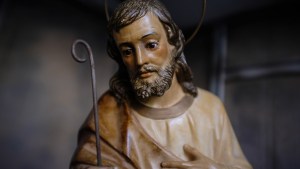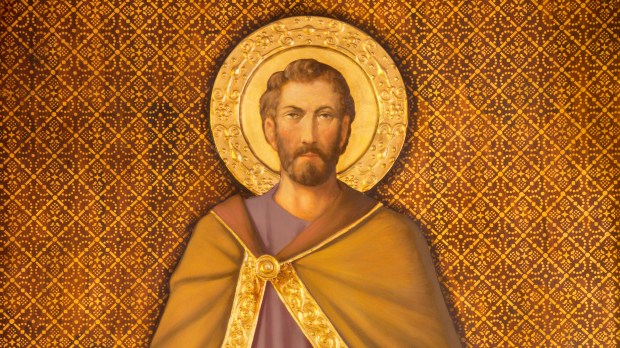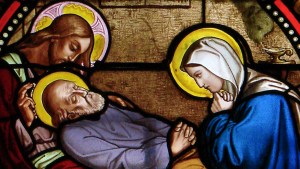St. Joseph is sometimes called the “New Joseph,” referring to the similarities he shares with the “Old Joseph” featured in the Bible’s Book of Genesis.
St. Bernard of Clairvaux shared his thoughts on the two Josephs in one of his homilies.
What are we to think of the dignity of Joseph, who deserved to be called and to be regarded as the father of our Savior? We may draw a parallel between him and the great Patriarch. As the first Joseph was by the envy of his brothers sold and sent into Egypt, the second Joseph fled into Egypt with Christ to escape the envy of Herod.
The chaste Patriarch remained faithful to his master, despite the evil suggestions of his mistress. St. Joseph, recognizing in his wife the Virgin Mother of his Lord, guarded her with the utmost fidelity and chastity.
To the Joseph of old was given interpretation of dreams, to the new Joseph a share in the heavenly secrets.
His predecessor kept a store of corn, not for himself, but for the whole nation; our Joseph received the Living Bread from heaven, that he might preserve it for his own salvation and that of all the world.
St. John Paul II commented on how many events and figures of the Old Testament found their fulfillment in the New Testament in his encyclical Redemptoris Custos.
The oft-repeated formula, “This happened, so that there might be fulfilled,” in reference to a particular event in the Old Testament, serves to emphasize the unity and continuity of the plan that is fulfilled in Christ.
With the Incarnation, the “promises” and “figures” of the Old Testament become “reality.”
The Joseph of the Old Testament was in many ways preparing the way for the Joseph of the New Testament, both participating in God’s divine plan. They both had their role to play in salvation history, echoing each other’s lives in many ways.



